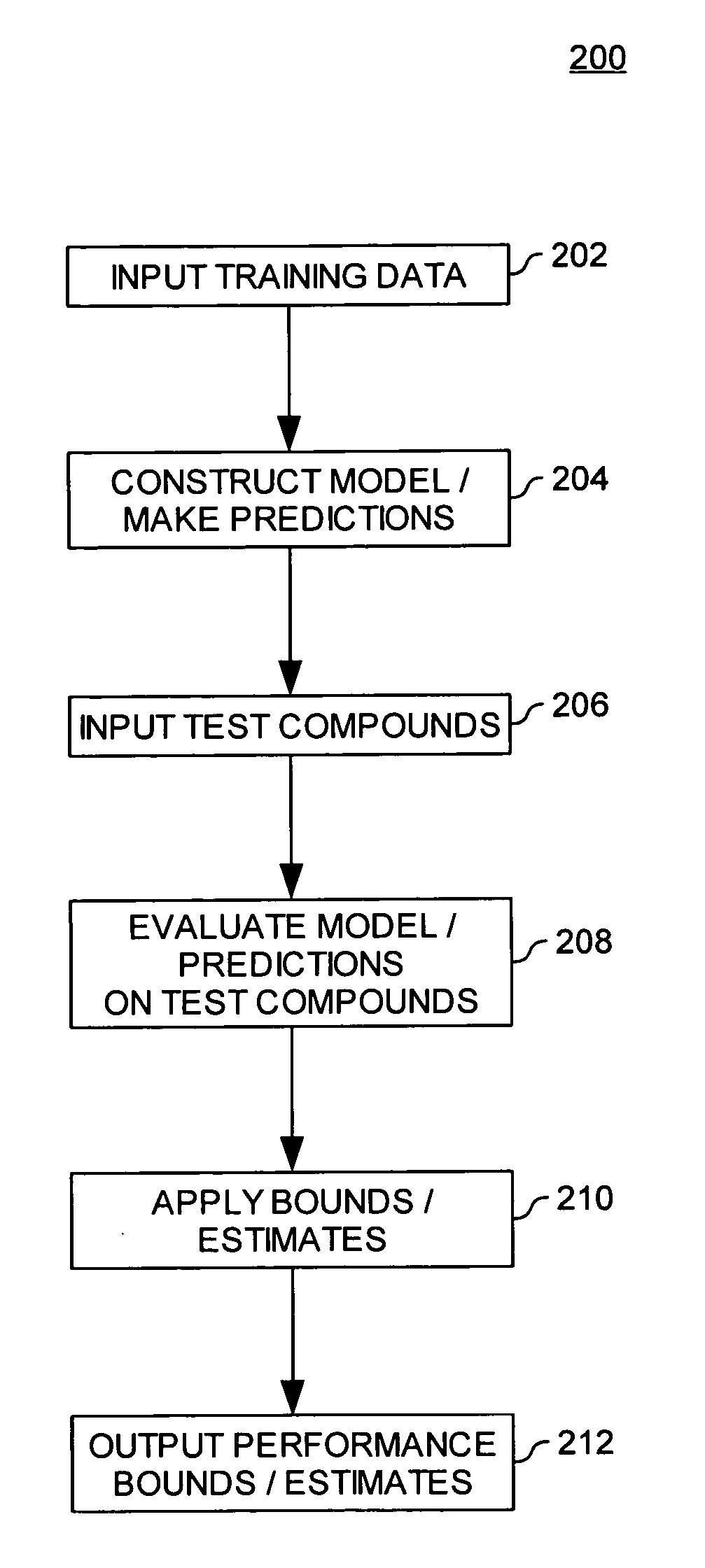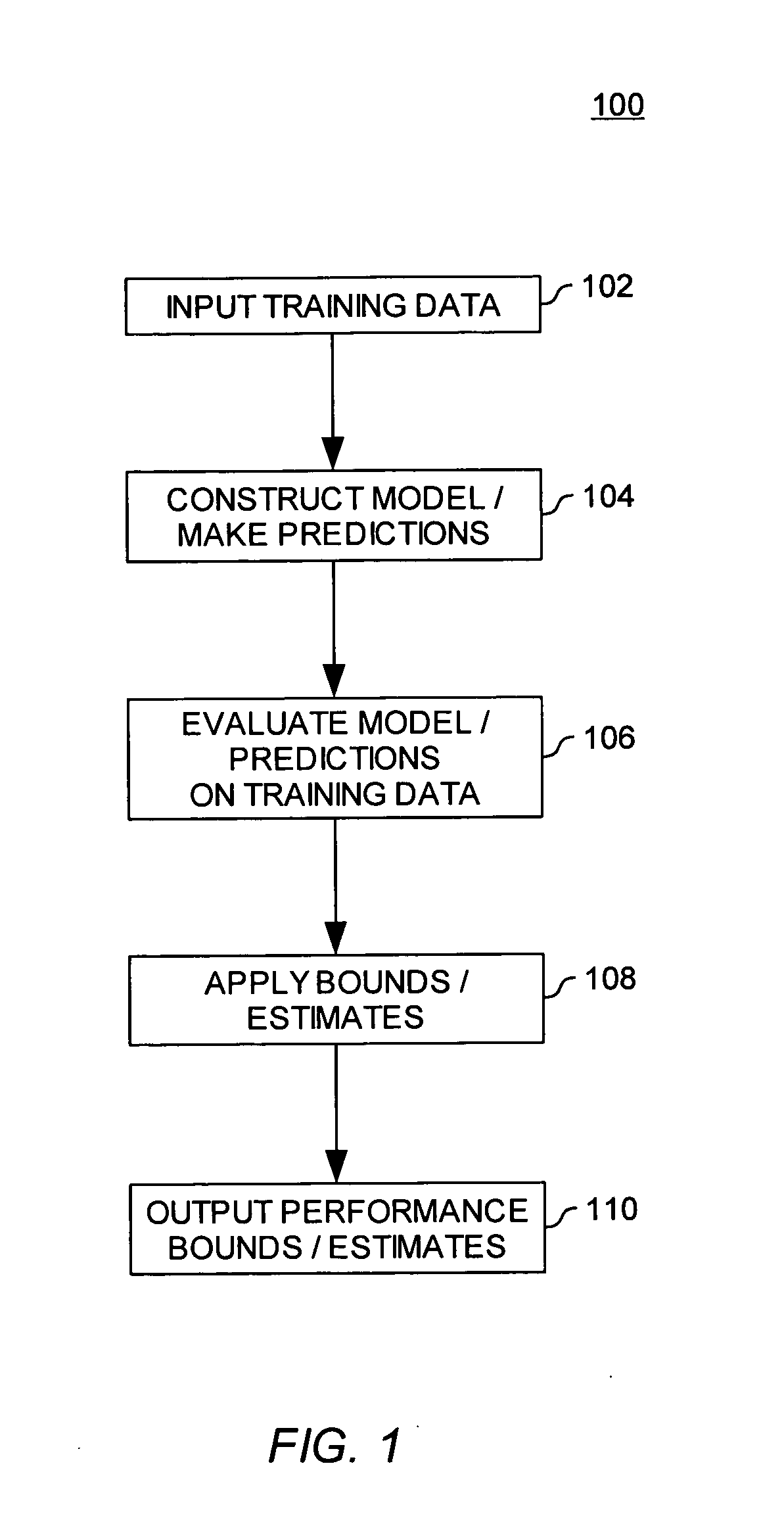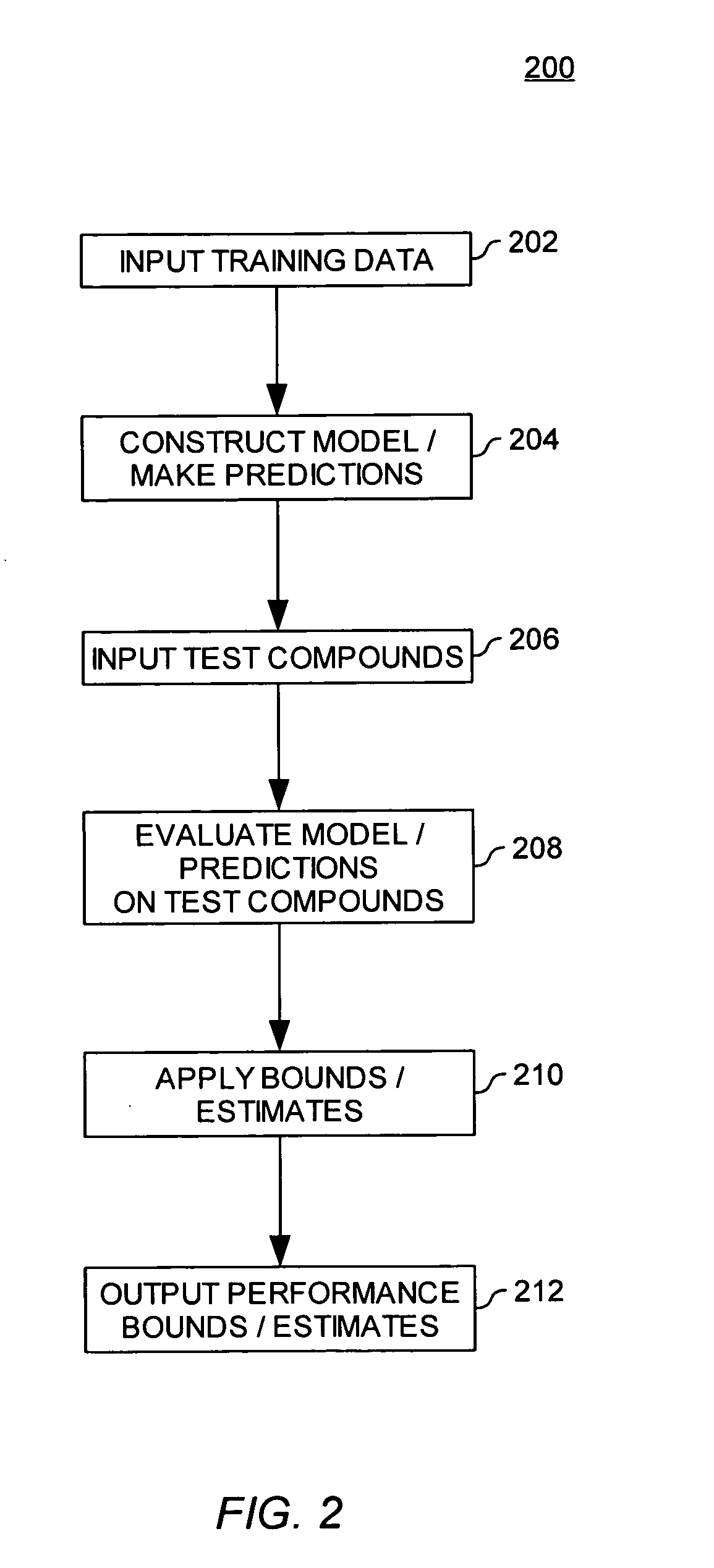Estimating the accuracy of molecular property models and predictions
a molecular property model and accuracy technology, applied in the field of machine learning techniques and computational chemistry, can solve the problems of limited usefulness of molecular properties models without an estimation of how well they perform, and achieve the effect of estimating or bounding many molecular properties models with a very high estimated accuracy
- Summary
- Abstract
- Description
- Claims
- Application Information
AI Technical Summary
Benefits of technology
Problems solved by technology
Method used
Image
Examples
Embodiment Construction
[0018] Embodiments of the invention may be used to estimate or bound the accuracy of a molecular properties model, or to determine a bound on, or estimate for, the statistical variance inherent in such an accuracy estimate.
[0019] In one embodiment, a molecular properties model may be configured to predict an empirically measurable property of a molecule (or atom, bond, molecule substituent, and the like). The property information for a given molecule may be based on intrinsic or extrinsic properties including, for example, pharmacokinetic properties, pharmacodynamic properties, physiological or pharmacological activity, toxicity or selectivity; a chemical property including reactivity, binding affinity, or a property of specific atoms or bonds in a molecule; or a physical property including melting point, solubility, membrane permeability, or a force-field parameter.
[0020] Often, the task of the model is to generate a prediction about the property of interest relative to a particu...
PUM
 Login to View More
Login to View More Abstract
Description
Claims
Application Information
 Login to View More
Login to View More - R&D
- Intellectual Property
- Life Sciences
- Materials
- Tech Scout
- Unparalleled Data Quality
- Higher Quality Content
- 60% Fewer Hallucinations
Browse by: Latest US Patents, China's latest patents, Technical Efficacy Thesaurus, Application Domain, Technology Topic, Popular Technical Reports.
© 2025 PatSnap. All rights reserved.Legal|Privacy policy|Modern Slavery Act Transparency Statement|Sitemap|About US| Contact US: help@patsnap.com



